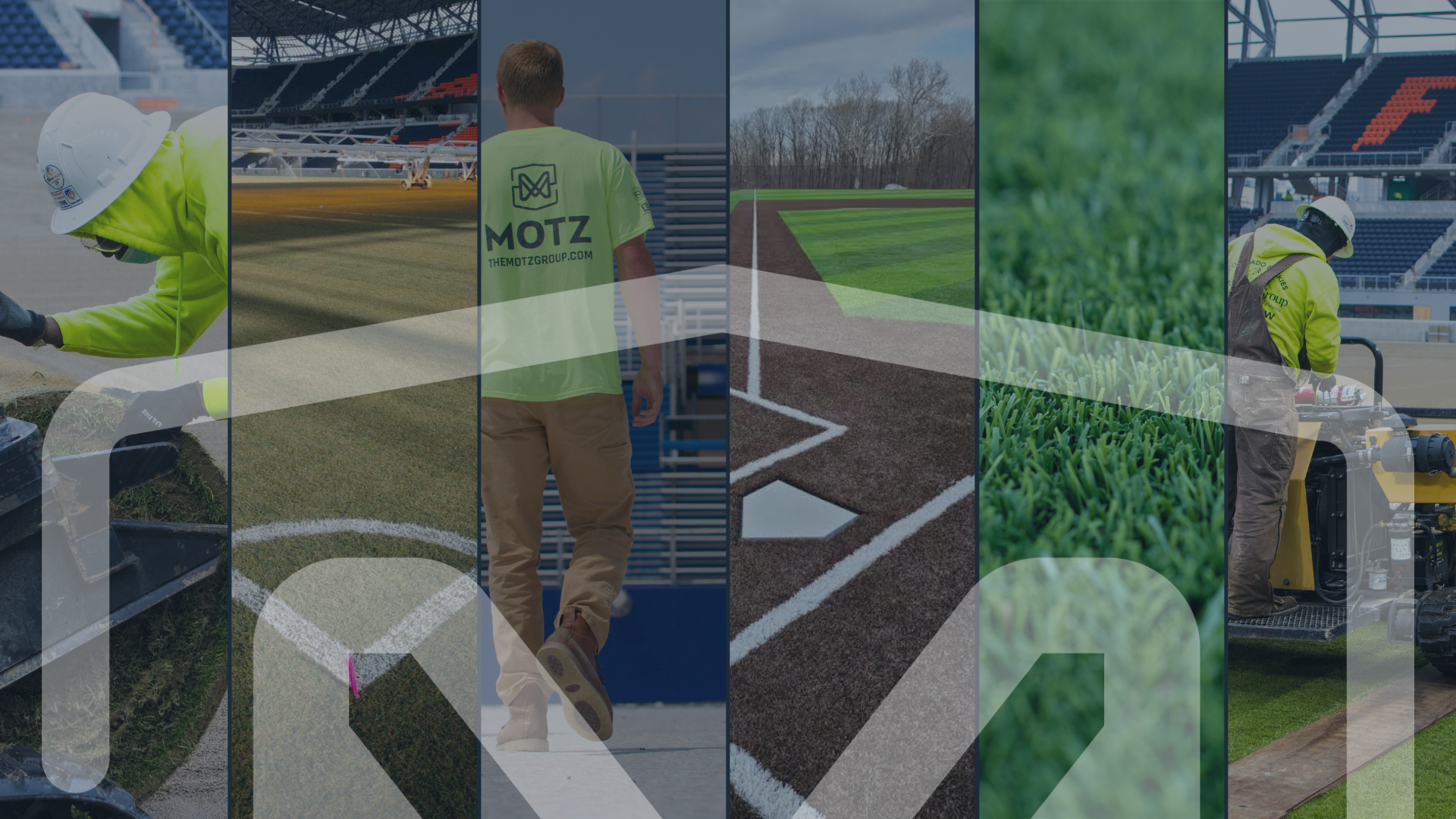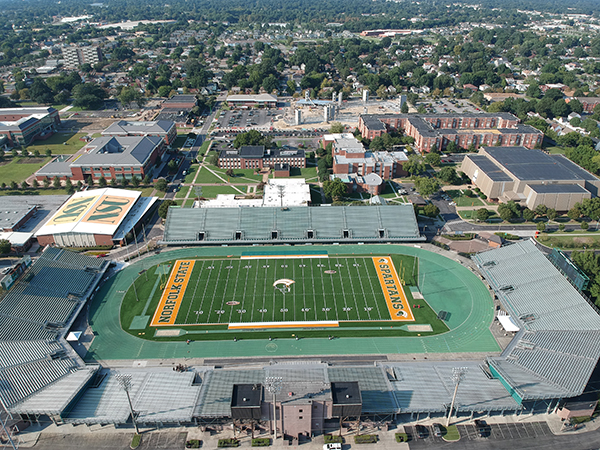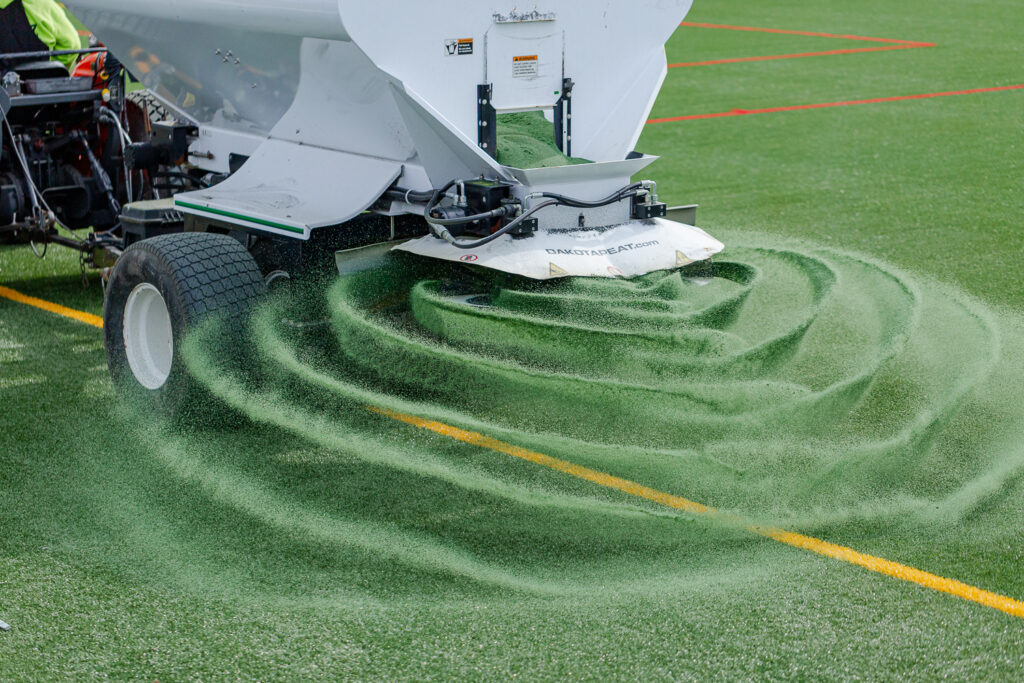
Sports Field Blog
Subscribe To Email Updates
Subscribe to our weekly newsletter and we’ll send updates straight to your inbox
How to Maintain Your Synthetic Turf Field and Why is it Important

Often times synthetic turf installations receive little to no maintenance. This could be due to budgetary constraints, time constraints, or just a general disinterest in maintaining a field. The downside of not maintaining a field? – untimely failure.
There are various meanings of the word failure as it relates to synthetic turf fields. This could mean aesthetics, performance, safety, or overall playability. Properly combing your turf fibers and infill, disinfecting the surface, repairing seams, and removing stains will be vital in extending the life of your field [field maintenance is not limited to these items]. It is recommended that every turf system has routine grooming after every 40 hours of use. This equates to usually once every two weeks. Below is a view into popular maintenance procedures, but we recommend you consult your turf supplier/installer as this can vary by manufacturer:
1. Grooming of infill and turf
Combing through your infill keeps your infill layer even across the surface. It will keep fibers extended and standing upright. This will ensure proper footing, ball bounce, gmax, and overall aesthetic appeal.
Grooming can be accomplished using a nylon or polypropylene bristle as well as a comb-like attachment. The brush shall contain NO metal fibers as these could fall out during grooming.
You may require additional infill (commonly known as a top off) throughout your field’s life, especially in high traffic areas such as goal mouths/lines, sidelines, field entries and exits, and centerfield. These are places that see the most amount of concentrated play or foot traffic.
2. Disinfecting the surface
Skip ahead to next section if you have a weak stomach – A field can be compared to a bathtub drain. The term blood, sweat, and tears is an accurate depiction of what is left on a synthetic turf field. These items are likely all found within your turf/infill. Athlete’s sweat, spit, and bleed on these fields as they put it all on the line to win a game. Rain and sun can only do so much to a field so its important to occasionally spray a disinfectant on your field to keep it clean.
3. Repairing seams
By spotting and repairing broken seams early, you can prevent greater future damage. It’s not uncommon for a seam to come apart especially in high traffic areas. It’s important that when it does you repair it quickly. Not repairing a seam can lead to a larger tear in the future, or worse it could lead to injury. Your turf company likely has a warranty to cover seam repairs within a certain timespan.
4. Stain/Debris removal
A majority of fields are installed outside. As a result, you will often see debris on the field such as leaves, trash, equipment parts like screws, nuts, or nails, or more hard to remove items such as chewing gum, grease, and oil.
There is equipment available that sweeps a field with magnets while grooming the turf/infill. These magnets will pick up loose debris that could pose a safety hazard for your athletes. Hair pins, nuts, screws, and other loose metal objects will be picked up by the magnet before leading to possible injury.
Chewing gum and sunflower seeds are discouraged on synthetic fields (yeah, and so is bringing food into a movie theater but we know people do it). Use approved cleaners to remove items such as chewing gum, equipment oil/grease, or other potentially staining objects. Check with your turf contractor to determine what cleaning methods are approved.
Some turf companies may recommend more frequent maintenance than others, or recommend additional maintenance steps, but if you are to take anything away from this blog its that anything is better than nothing. Properly maintaining your turf will give your field the best chance for a full lifespan. Extending your fields lifespan through regular maintenance can save tens of thousands of dollars in the long run. Not all fields are exactly the same or played on as often as others, so consult your turf company to discuss a maintenance program fit for you.
Similar Blogs



